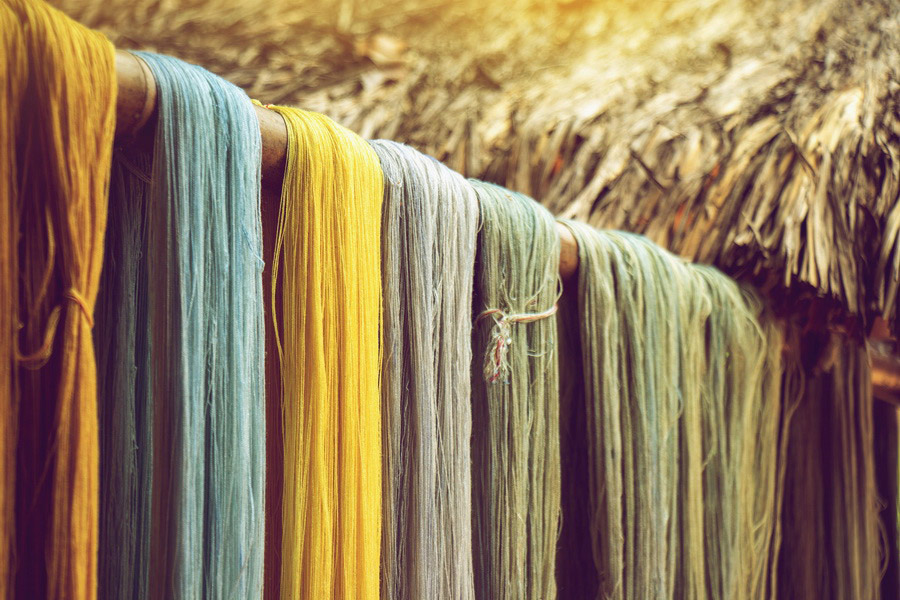Dyeing of Silk Fabrics

Chinese silk: a riot of colors
Ancient Chinese were able to obtain silk of various natural colors. They noticed that the color of silkworm cocoons depended on what their caterpillars ate.
In that way “home-grown silkworm” gave silk of white color if its caterpillars were fed only with leaves of white (garden) mulberry during breeding period.
To receive silk of yellow color the caterpillars of “home-grown” silkworm” were fed with Je tree (wild mulberry growing in mountains) leaves during the first half of their life, and garden mulberry leaves - in the second.
There were four preparatory stages of additional silk dyeing: 1) washing, 2) extraction, 3) bleaching, and 4) etching. After cocoons unwinding and threads splicing they started washing process. Silk was cleaned and became white since it lost the remnants of sericin and dirt. Written sources give the explicit description of the process: “The silk scourers treat silk threads with hot water. They wash silk in threads with pure water. In seven days they place the threads 20 cm deep in the earth to dry. In the afternoon the threads are dried in the sun, at night they are put in a well. This operation lasts for seven days and seven nights. It is called washing silk threads with water”.
After threads were washed they were used for manufacturing one-color fabrics. If threads were intended for making multi-color fabrics, they were subject to further processing: extraction, bleaching and, depending on the dye, etching. The same operations were used for one-color fabrics before their subsequent dyeing.
Extraction: silk was boiled in water containing the ashes of lian tree fruits. Extraction was followed by the third stage of processing – bleaching. Silk was placed in vessels where it soaked; then it was covered in shen shell powder. When the powder sank silk was taken out and shaken. Black color was obtained with the help of iron vitriol. Indigo leaves were the most popular for dark blue.
The main natural red dye in ancient China was the substance received from madder root. By the end of Han epoch Chinese also used safflower to obtain red fabrics. It came to China as a result of contacts with the West. Jinzi fruits were used for getting yellow color; ochre – for dark red, mineral dye baionma or xuanjun were needed for white.

